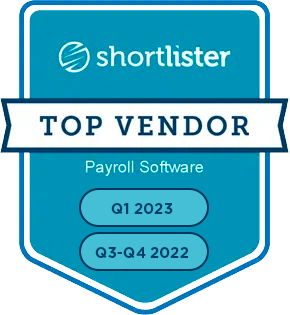The fast food industry has been struggling to hire employees for some time without applicant tracking systems, and there’s no sign that it will get easier soon. According to the National Restaurant Association, the fast-food industry workforce is expected to grow by 400,000 by the end of 2022. But, this growth won’t be enough to fill all the open positions at restaurants across the country.
Why? The answer lies in two key areas:
The economy is strong, and unemployment is low. Many people are working multiple jobs or have found other ways to supplement income during the economic recovery.
Inflation is increasing consumer prices, and wages have increased in most market sectors. This makes it difficult for restaurant owner-operators to compete with industries that offer higher wages and better benefits packages.
As a result, restaurant owner-operators have no choice but to hire fewer people or increase wages and provide better benefits if they want to keep their business running smoothly. Many restaurants have started using applicant tracking systems to improve their hiring process and increase their applicant pool.
What Is an Applicant Tracking System?
An applicant tracking system (ATS) is a software platform that automates certain aspects of the hiring process. The platform allows you to manage your recruitment process while keeping costs low. This includes posting jobs on job boards, screening resumes and conducting interviews with candidates through video chat software.
Using the ATS platform, you can easily manage many job applications, recruit new employees, and keep hiring managers on track to follow up with qualified candidates.
How Applicant Tracking Systems Assist in Hiring Practices
Applicant tracking systems are a vital tool for any business. These systems allow your recruitment team and hiring managers to streamline the hiring process, save time, and reduce costs by having all the necessary information at their fingertips.
The most common type of applicant tracking system is the online application tool. This system allows candidates to upload their resumes and cover letters online and apply for positions directly through the ATS. The ATS organizes resumes and creates candidate profiles, which makes it easier for recruiters to find qualified talent and respond accordingly.
The applicant tracking systems can also keep track of each applicant’s progress. Once an applicant record is created in your ATS, teams can track where they are in the application process. You’ll also be able to see how many times a candidate has applied for jobs on your website, if a recruiter or hiring manager has contacted them, and the length of time for the candidate to respond to an email or phone call from a recruiter.
Some of the ways that applicant tracking systems are changing fast-food hiring practices include:
Improving Efficiency and Reducing Costs
Automated processes mean fewer mistakes, faster processing, and less time spent on repetitive tasks such as matching a candidate’s experience to the job requirements. As a result, companies can hire more people while saving time conducting background checks, drug tests, training, and additional onboarding requirements.
Reducing Bias in Decisions
Applicant tracking systems can be configured to ensure your hiring activities meet the Equal Employment Opportunity (EEO) at the Federal and State level. Implementing these requirements provides an objective hiring standard that prevents biases or prejudices toward applicants based on race, color, religion, sex, national origin, age, disability, or genetic information.
Easing Employee Turnover
Employee turnover is costly. The cost of recruiting and training new employees and the loss of productivity while these new employees are learning the ropes can be staggering. Employee turnover will occur, but automated applicant tracking systems help companies reduce this problem by making the application process easier for both applicants and employers.
Reducing the Time to Hire
Information submitted and gathered through the application and interview process can help facilitate new hires’ onboarding when they become employees. An employee’s information parsed from their resume can be used to create an accurate employee record in your company’s HR system. This information can help provide a complete view of that person’s entire employment lifecycle.
Reducing Human Error
Automated systems can be programmed to prevent mistakes, such as wrong information being entered or people forgetting to submit employment criteria. For example, suppose a job applicant does not have a driver’s license number on file for their background check. In that case, an alert could be configured to notify HR to request that information before moving forward with the application process.
Automated Processes are Easier to Scale
Applicant tracking systems are automated, can be accessed by anyone online, and are easy to scale. Companies can source more jobs and hire more people without worrying about manually managing the hiring process. 
How to Use an Applicant Tracking System to Manage Current Employees
In addition to using the ATS in your hiring process, you can also use it to manage current employees. Here are some ways you can use an applicant tracking system to keep track of current employees:
Track Applications from Current Employees
Some companies look to hire employees internally before looking externally for new hires. They know that person well enough and are already a good fit for their company culture. In these cases, an applicant tracking system can make it easier for managers to track applications from current employees. Internal candidates applying for those roles are familiar with the application interface, which enables them to quickly search for specific job titles, keywords, or even locations within the company.
Bottom Line
Filling a restaurant job is no longer just about job candidates filling out a paper application and hoping for the best—it’s about tracking all applicants and matching the skillsets of the right person for the position. With an applicant tracking system, you can easily find qualified candidates interested in working for your business by searching keywords, skillsets, experience levels, locations, and even specific positions within companies.
If you’re looking for a way to streamline your restaurant business, Alliance Human Capital Management can help. We can streamline your hiring process, allowing you to spend more time growing your business.
Our software is designed with the fast-paced multi-unit structure of the restaurant industry in mind, and our team of experts has nearly 10 years of customer service experience working with restaurants like yours. Schedule a demo today.





